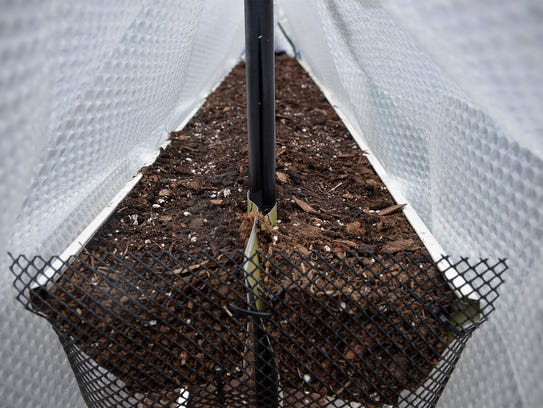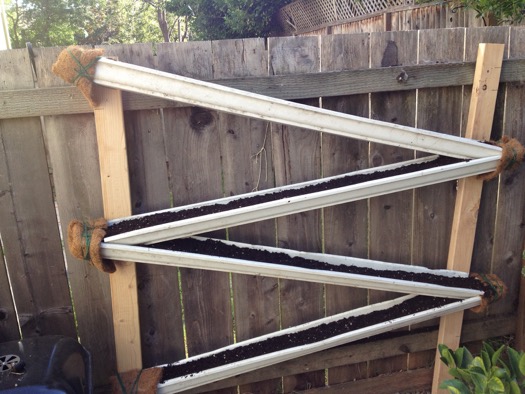How to Build a Lettuce Terrace out of Gutters

Lettuce is a crop that can be grown almost anywhere, and you don’t need to plant it in the ground to produce a nice harvest. This makes lettuce ideal for using improvised systems that can free up space and maximize productivity. One great way to take advantage of this option is by using gutters to grow rows of lettuce above ground. Let’s take a look at a ingenious, yet simple system that anyone with a fence in a shady place can take advantage of in a few simple steps.
Preparing the Fence and Gutters
All you need is long pieces of gutter material and a sturdy fence in order to make a few rows of lettuce. The idea is to make an improvised terrace that is about three rows deep that follows the direction of the wood on your fencing. The first step is to take some planks of wood to be used as a brace for the gutters. Keep in mind that the gutters will be very heavy once you add the soil and water, so adequate bracing is essential. Secure the wood planks to the fence by firmly attaching them to the posts with brackets or a number of long wood screws. You may also want to consider attaching the brace wood to the wood of the fence in equal intervals for additional security as well.
The next step is to attach the gutters to the support beams that you’ve just created. You can do this by screwing the gutter directly to the wood or installing support brackets that will attach to the support beam as well as cup the gutters from the bottom. You can also improvise as necessary, as long as the gutters won’t bend or tear off once they are filled.
Planting the Lettuce
Lettuce needs a lot of water, but it’s important that the soil drains as well. Cut a series of small holes along the bottom of the gutter every few inches. You can also angle the gutters slightly so the water will run off to one side. You can then collect the water and re-use it, or you can allow the holes to help irrigate the rows beneath. In all cases, tinker around until you find the best solution that will keep the soil and lettuce healthy while conserving water at the same time.
The next step is to add the soil. Different people have different preferences in terms of what type of soil to use and what food to add. You can use compost, potting soil, plant food or a mixture of everything. The important thing is to fill the gutters up to the rim with the soil and give it a nice soak of water.
Do this a few times to allow the soil to settle and compact, and add more as necessary. Aim to have the soil reach about an inch below the rim of the gutter after it settles. This will ensure that the lettuce has a nice, stable and deep bed of soil to grow in while providing space to cover the seeds after they are planted. Once the soil has settled, simply plant the seeds or sprouts and add about an inch of topsoil to cover them up.
Screening

You will want to attach screen material on top of the gutters to prevent birds from taking the seeds. This barrier will also prevent debris from falling into the soil as the lettuce grows. This is particularly important if you have placed your gutters beneath trees, which you should do in order to provide shade for the lettuce. Finally, screens will help to protect your gutters and budding lettuce from the brunt of storms and heavy rain.
The trick is to be able to raise the screen as your lettuce grows so that it doesn’t get stunted. There are a number of ways that you can do this. First, you can take some really thick electrical, hangar or even coaxial cable wire and make a loop. Insert each end into the soil and the screen can rest on top. Make the loops progressively larger as the lettuce grows. Once the crop has been established and is sturdy, you can remove the screens altogether. Feel free to improvise and get creative with respect to addressing this important component of this system.
All you need to do is keep watering your lettuce, removing any weeds and pruning the crops as necessary. You can also use this system for growing other leafy vegetables such as spinach and kale as well. Try it for yourself, and see how easy it is to make good use of scrap gutters and some fencing. You will benefit from the added growing space, tending the crops will not be so labor-intensive, and you should get a nice harvest at the end of the season.


